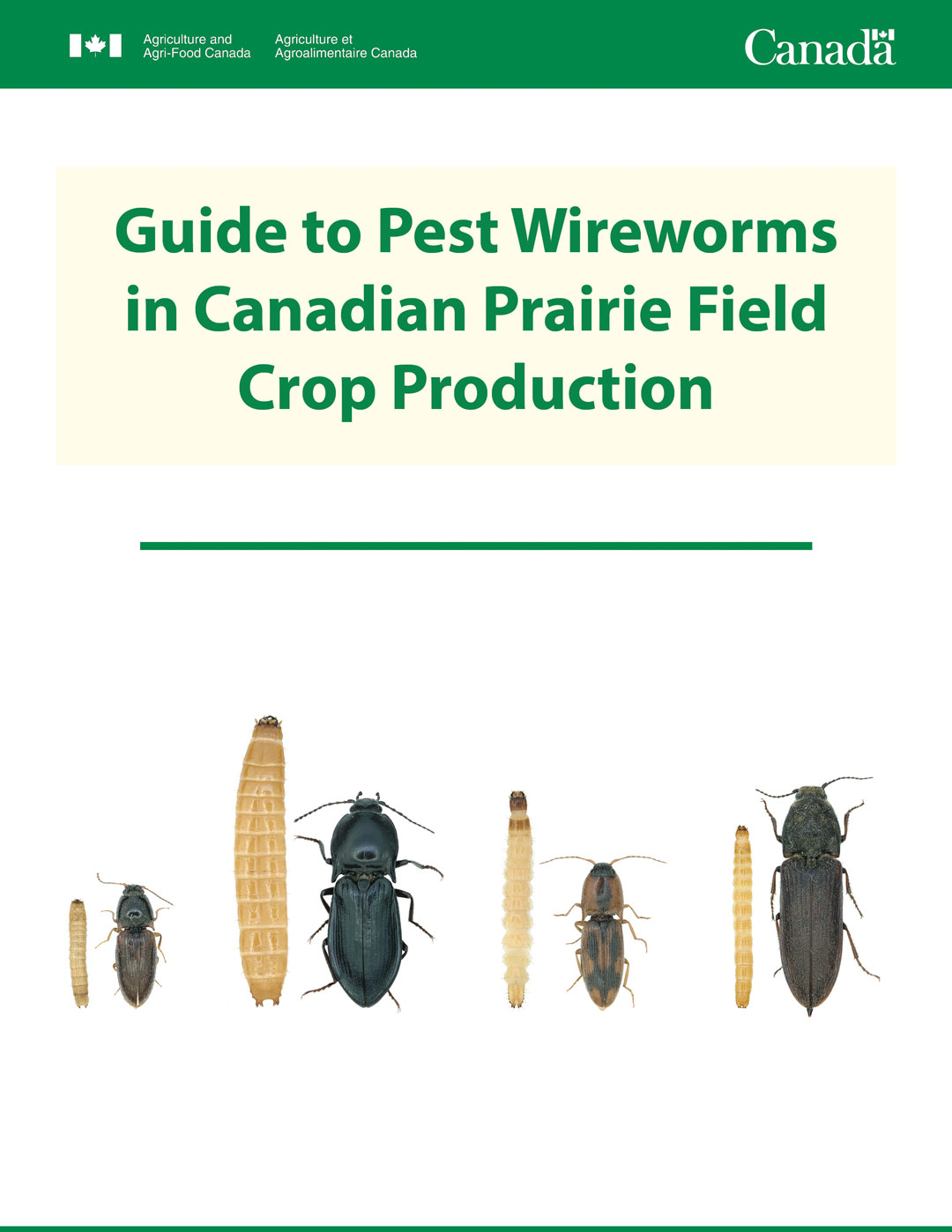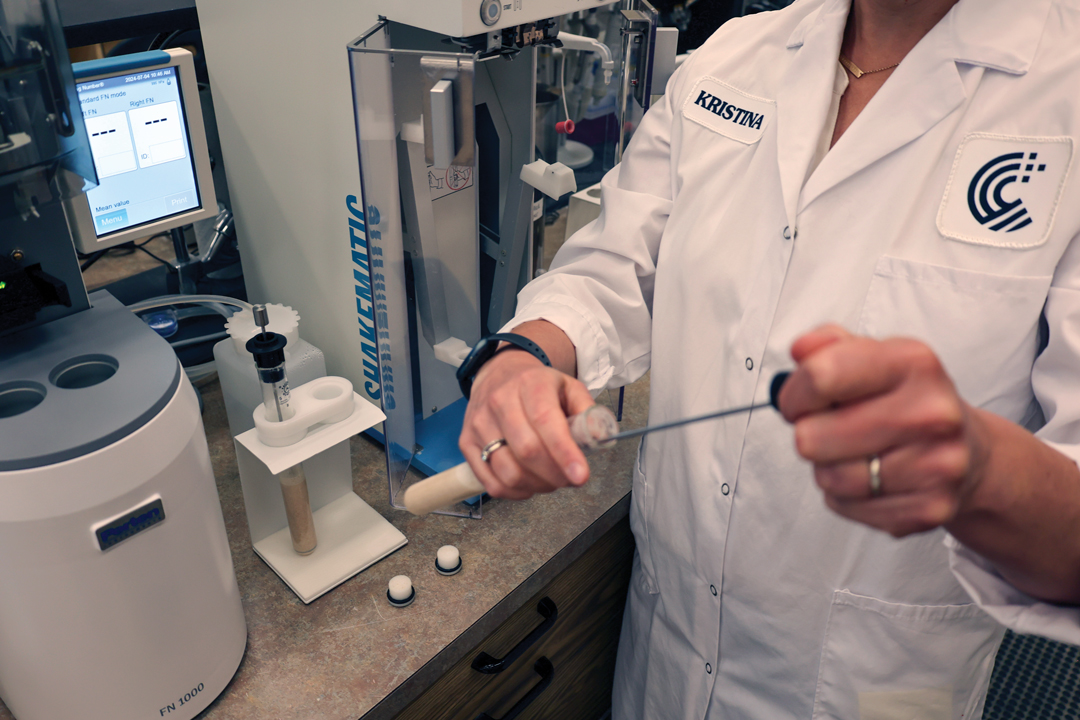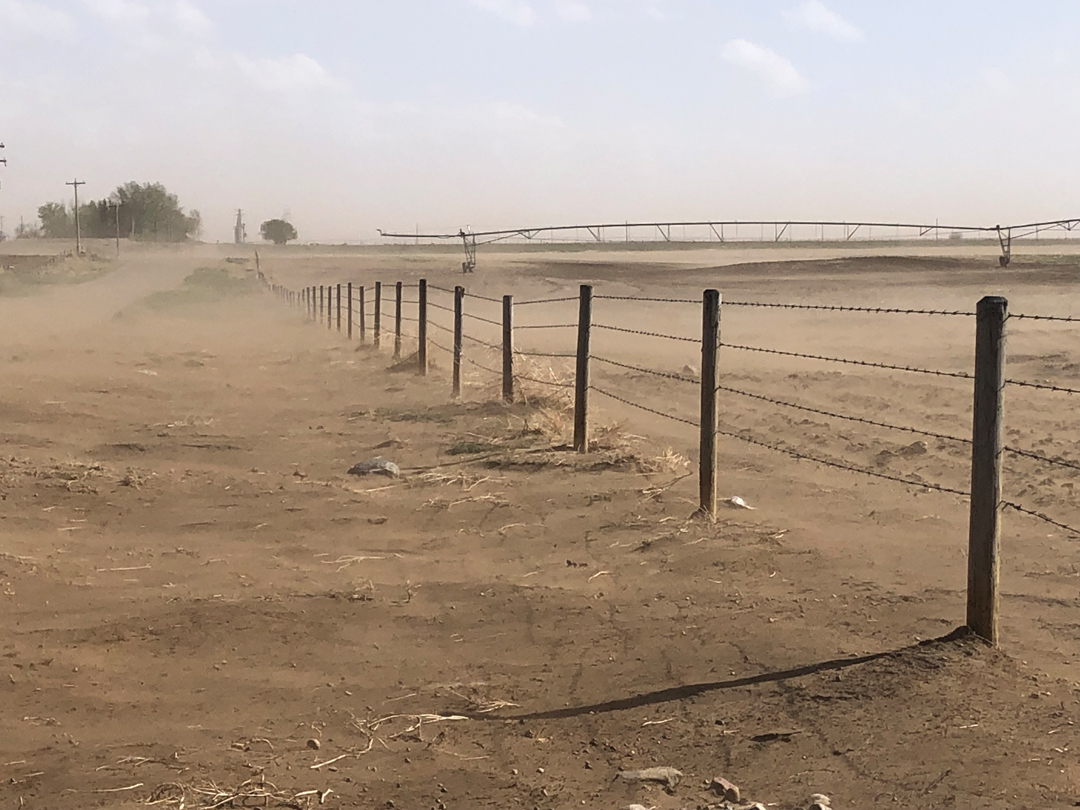BUG BIBLE
BY ELLEN COTTEE • PHOTO COURTESY OF AGRICULTURE AND AGRI-FOOD CANADA
Pests are a top concern for farmers, especially those with limited management options. Wireworms are one pervasive example. A misnomer, they are not actually worms but rather the larval form of click beetles. These sneaky creatures can wreak havoc on fields as they hollow out seeds and shred stems in cereal crops. Hard to identify and even harder to manage, these small but mighty pests can devastate entire fields.
What’s a farmer to do? That’s where Agriculture and Agri-Food Canada’s (AAFC) newly released Guide to Pest Wireworms in Canadian Prairie Field Crop Production comes in. The book is part of an ongoing project funded by the Western Grains Research Foundation (WGRF) and the Alberta Wheat Commission. This comprehensive guide features historical information about the spread of wireworm populations and research carried out on the Prairies as well as an exploration of modern monitoring and management options.
Haley Catton is the guide’s primary author and an entomologist for the federal government. She launched the AAFC Lethbridge Research and Development Centre cereal insect research program in 2016. Catton first talked to farmers and entomologists to learn which pests they believed needed to be tackled. “The wireworm kept coming up,” said Catton. “The more I work on it, the more I learn how big the problem can be for some farmers.”
Much wireworm research was conducted between 1930 and 1970, but the emergence of pesticides in the 1940s and 1950s that could manage wireworms saw this scientific analysis backburnered for decades.
However, with a renewed focus on the ban of toxic pesticides, which included the use of lindane for wireworm, the early 2000s brought softer options that did not adequately control the pests.
“The main concern, of course, would be the loss of products to control wireworms that happened a number of years ago,” said Garth Patterson, WGRF executive director. “Farmers are seeing an increase in wireworm populations, so they need to understand how much of an issue it is and how to manage them.”
Wireworms can burrow deep into the ground and live up to a year without eating. This makes it difficult to determine if a field is infested before the damage begins. Identifying wireworms can be a challenge given how similar in appearance the larvae and adult beetles can be to other insects. This led Catton and her team to compile the book’s microphotography, which illustrates the small differences between these pests, beneficial and neutral insects.
“I think that is the real strength of this guide,” said Catton. “I’ve been looking at wireworm information for five years now, and I haven’t found any photos online of a Prairie species this detailed while also explaining what the photos mean—what body parts you should be looking for, what features identify the species you have.”
“The importance of the guide will be a transfer of the information, the results of the science and research, getting these recommendations out to farmers,” said Patterson. “That’s the important final step, and we’re really pleased that Haley Catton and her team are putting a guide together to target farmers.”
“Right now, there’s nothing for wireworms, nothing you can throw in the truck as a resource,” said Catton. “We hope this will be that resource for farmers.”
Find the guide at publications.gc.ca where French and English versions are available for free digital download. To receive a free, limited edition print copy, email haley.catton@agr.gc.ca







Comments